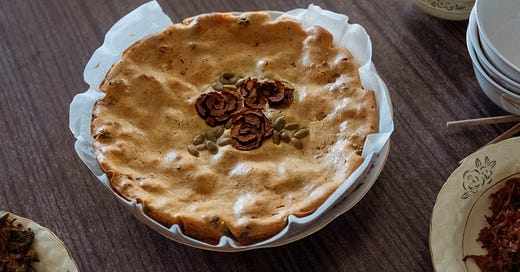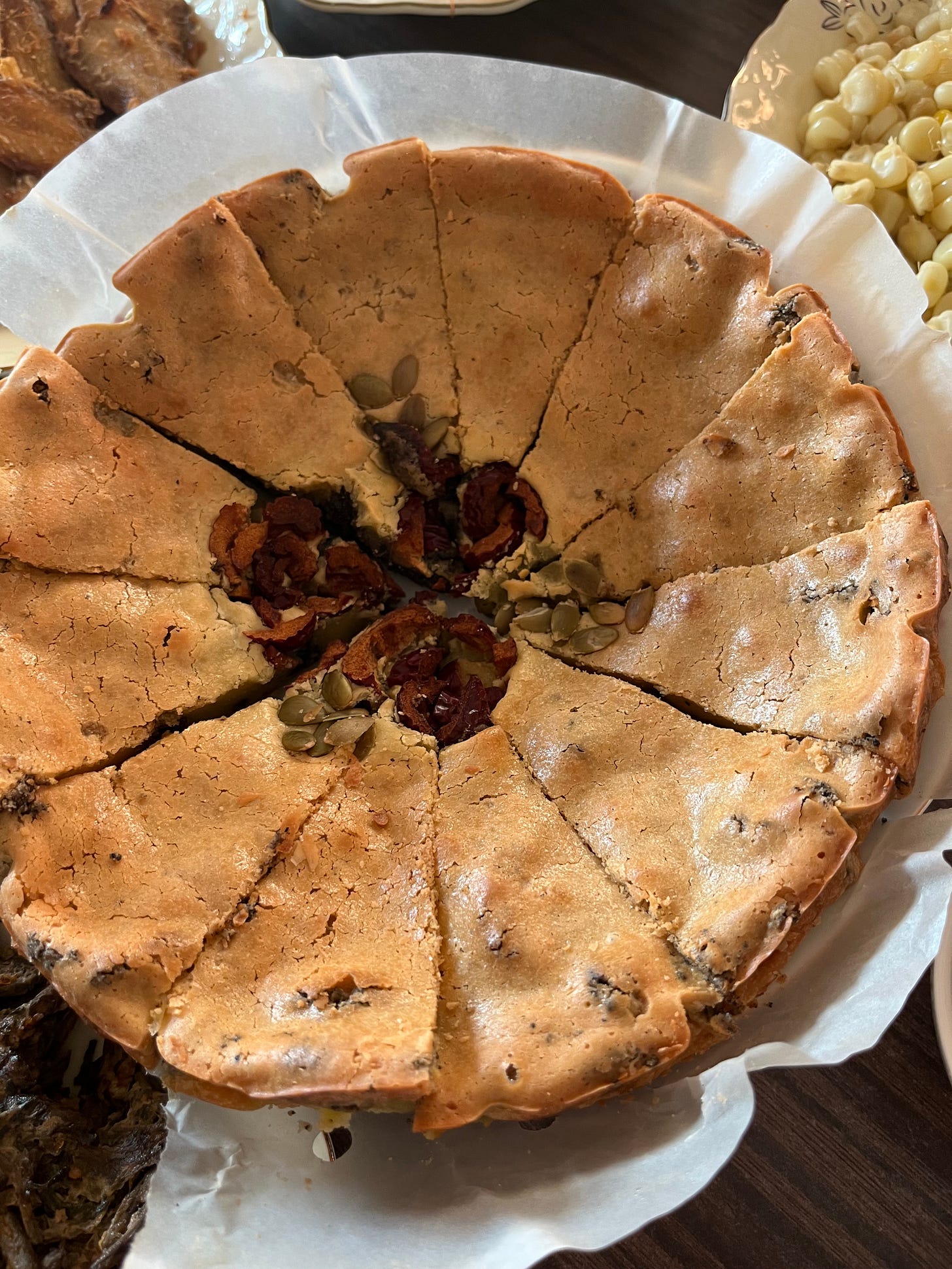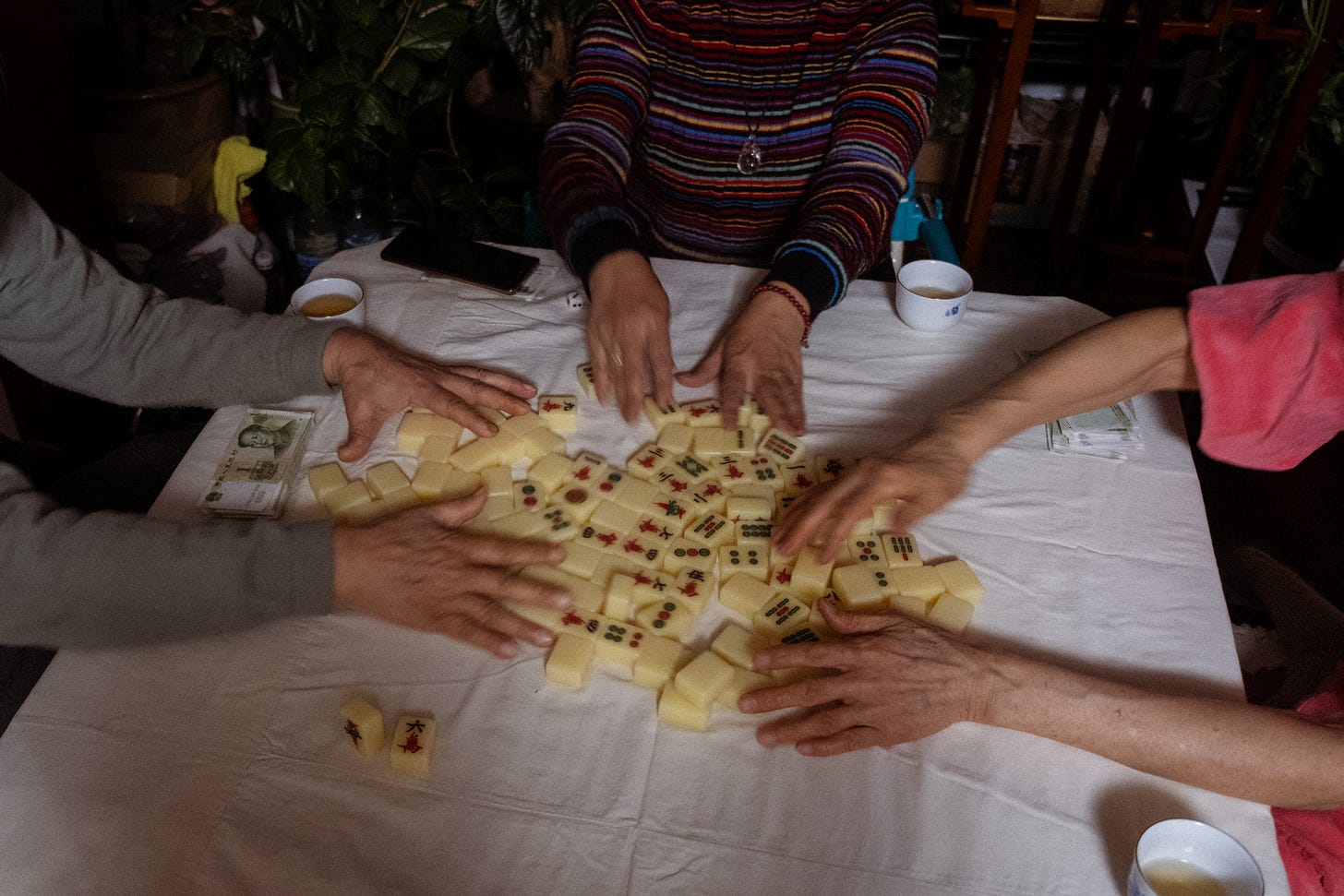Keeping this week’s missive short— I’m currently in Okinawa, Japan! I just boarded Holland America Line’s MS Zuiderdam in the Naha port, where I’ll be Guest Chef on board for the next two-week leg from Japan to Shanghai. I’ll be executing Holland’s first plant-based pop-up for the ship’s fine dining restaurant and demoing a few Chinese recipes for the main dining room menu, to serve to over 1200 guests.





I can’t wait to get in the kitchen (kitchens, more like) to see how the staff feeds 2000 people a day, over four months on the sea. Nevermind the staggering scale of distribution and economics, I wanna see their par sheets and daily production lists and staffing logistics for continual meal service. A nightmare? A miracle?
This week’s recipe: During my last week in Harbin, I baked a niangao for my great uncle’s family, bringing it to our final relative gathering on 初十. It’s my go-to potluck dessert, and always a hit— both my aunts asked me for the recipe. This is an updated version of the one on my blog: I tweaked the ingredients, concealed the black sesame filling inside the cake, and baked it in a round pan for maximum ~auspicious~ symbolism.
Why I like baking niangao instead of steaming:
Usually the stove is occupied when cooking Chinese dishes— this is one of the few things you can actually shove into the oven and bake in advance.
Unlike steamed niangao, which has to be heated up, baked niangao tastes better when cooled. It’s sturdy and easy to transport (great for potlucks)
Chewy, golden edges. The intersection of mochi, cake, and brownie.
Black Sesame Baked Niangao
For the black sesame filling:
¼ cup (70g) black sesame seeds
¼ cup (40g) granulated or coconut sugar
¼ cup (65g) sesame paste or tahini, or a combination of sesame paste and peanut butter
½ teaspoon salt
For the niangao:
8 oz (225g, 1.5 cups) glutinous rice or sweet rice flour
1 cup (240g) any unsweetened non-dairy milk, I like coconut milk here
⅔ cup (120g) granulated sugar
4 tablespoon (55g) coconut oil or vegan butter, melted
2 eggs or flax ‘egg’ (2 tbsp ground flax seed whisked with 5 tbsp water, left 5 minutes to thicken)
½ teaspoon vanilla extract
Red dates, goji berries, sesame or pumpkin seeds, for garnish
Preheat the oven to 375°F/180°C, and line a 8-inch square pan with parchment paper.
Make the black sesame filling: Toast the black sesame seeds in a dry pan over low heat for 2-3 minutes, stirring occasionally, until the seeds begin to crackle and smell fragrant. Transfer to a plate and allow to cool slightly. Place the toasted black sesame seeds and sugar in a food processor or blender and blend to the consistency of a fine sand. Transfer to a bowl and stir in the salt and sesame paste (or tahini). Fold with a spatula until the mixture is fully combined and resembles a paste or thick peanut butter.
Make the niangao batter: In a mixing bowl, combine the glutinous rice flour, non-dairy milk, sugar, coconut oil, eggs or flax mixture, and vanilla extract. Whisk the batter until smooth.
Pour half of the batter (reserve the other half) into the parchment-lined baking pan. Using your fingers, evenly distribute the black sesame paste over the batter, in little dollops of filling. Carefully pour or drizzle the remaining half of the batter on top, covering the black sesame layer as much as you can.
Bake for 32 to 35 minutes, or until the surface and edges are golden brown and the center of the cake springs back when lightly pressed. If garnishing with dates, goji berries, or pumpkin seeds, wait until after 15 minutes before pressing them lightly on top (they’ll darken if baked for too long).
Let the niangao cool thoroughly before cutting and serving.
Here’s the recipe in Chinese, which I sent to my aunts. I’m trying to translate my own recipes as practice, and I’ve noticed a few differences in Chinese recipe writing:
The quantities follow the ingredient, instead of the other way around. And grams are standard!
Teaspoon translates to 茶匙, literally “tea spoon”, but tablespoon is 汤匙, “soup spoon."
Chinese characters are much more concise than English words. The same meaning takes up half the space.
黑芝麻烤年糕
芝麻馅:
黑芝麻 70g
椰糖、白糖 40g
芝麻醬、花生酱混合 65g
盐 3g
麻糬层:
糯米粉 225g
椰子奶 或 无糖豆浆 240g
椰糖 或 白糖 120g
椰油( 融化) 55g
2个鸡蛋 或 亚麻 “蛋”(2汤匙亚麻籽粉 + 5汤匙水)
香草精 ½ 茶匙
紅棗、南瓜子(点缀)
步骤
将烤箱预热至180°C,在8英寸方形烤盘上铺上烘焙纸。 将亚麻籽和水放入一个小碗中搅拌,静置五分钟使其变稠。
制作黑芝麻馅: 将黑芝麻炒熟,不断搅拌2到3分钟,直到黑芝麻开始爆裂并散发出香味,注意不要炒焦。 将芝麻、糖和盐放入搅拌机,搅拌成细沙一样。移至碗中,加入芝麻酱,搅拌成糊状。
在一个大碗中,将糯米粉、椰奶、糖、融化的椰子油、亚麻“蛋”和香草精混合,搅拌至光滑。
将一半的米糊倒入烤盘中,均匀的散放黑芝麻酱(也可以先用手揉成球状摆开)。 再将剩下一半米糊倒进去。
烘烤 32 到35 分钟,过了15分钟,在将红枣和南瓜子按入表面做点缀。
年糕烤至金黄色,用手指轻轻按下中心会弹回时即可。凉凉后即可切成块。








Will definitely give this recipe a try! All the best guest-chefing! Can't wait to hear about it :)
Looking forward to making this!